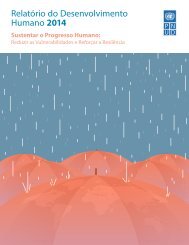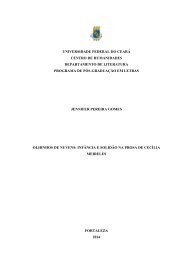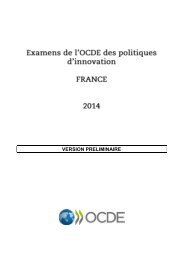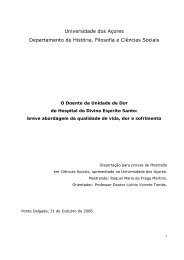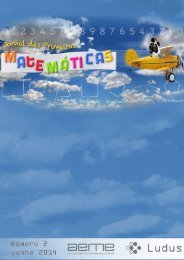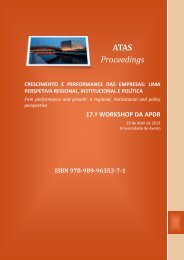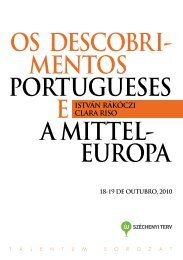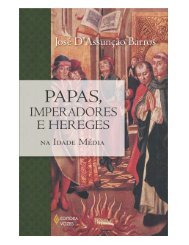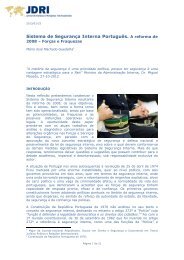1POTXAdSn
1POTXAdSn
1POTXAdSn
Create successful ePaper yourself
Turn your PDF publications into a flip-book with our unique Google optimized e-Paper software.
in alphabetical sequence. Synonyms include true<br />
synonyms, names resulting from misidentifications and<br />
typographical errors. Synonyms are listed in the index<br />
in association with the valid species or subspecies<br />
names. Many nomenclatural changes have occurred<br />
since the edition of Flora Europaea (Tutin et al. 1964,<br />
1968, 1972, 1976, 1980) and of Nova Flora de Portugal<br />
(Franco 1971, 1984; Franco & Afonso 1994), but there<br />
is not an updated consensual reference regarding<br />
accepted plant names. Furthermore, accepted names<br />
still vary according to different sources (IOPI 2010;<br />
IPNI 2010; TROPICOS 2010; USDA/ARS 2010;<br />
USDA/NRCS 2010). In these conditions, for taxa<br />
found outside of the Azores we have tried to comply<br />
with the names accepted by GRIN Taxonomy (USDA/<br />
NRCS 2010), since this database is regularly updated.<br />
For native and endemic taxa we followed Schaefer<br />
(2002, 2003, 2005a,b) and Carine & Schaefer (2010).<br />
For the distribution of all species and subspecies<br />
in the nine Azorean islands we used the following<br />
abbreviations: COR – Corvo; FLO – Flores; FAI –<br />
Faial; PIC – Pico; GRA – Graciosa; SJG – São Jorge;<br />
TER – Terceira; SMG – São Miguel; SMR – Santa<br />
Maria. The first column (D) gives the colonization<br />
status of each species as follows:<br />
end – azorean endemic species, i.e. species (or<br />
subspecies) occurring only in the Azores, as a result of<br />
either speciation events (neo-endemics) or extinction<br />
of the mainland populations (palaeo-endemics);<br />
maC – macaronesian endemic species, i.e.<br />
species only known from Macaronesia (the Azores,<br />
Madeira, the Canaries, the Cape Verde Islands);<br />
n – native species, i.e. species which arrived by<br />
long-distance dispersal in the Azores and which also<br />
occur in other archipelagos and/or on continents. The<br />
native or introduced status of a taxon is still debatable;<br />
however we tried a consensus among all the authors,<br />
based on the available information;<br />
Regarding introduced species, i.e., species<br />
believed to occur in the archipelago as a result of<br />
human activities, we distinguished two groups, natu –<br />
naturalized (with self supporting populations) and cas<br />
– casual taxa (occasionally escaped from cultivation).<br />
We decided to include the latter, although they are not<br />
part of the flora, since those taxa were usually included<br />
in previous lists. It is also important to notice their<br />
119<br />
2006). As famílias e os géneros são listados alfabeticamente.<br />
A lista de sinónimos inclui sinónimos verdadeiros,<br />
nomes resultantes de identificações erróneas e<br />
erros tipográficos. A lista de sinónimos encontra-se no<br />
Índice, associada às espécies ou subespécies válidas.<br />
Muitas alterações de nomenclatura ocorreram desde<br />
a publicação da “Flora Europaea” (Tutin et al. 1964,<br />
1968, 1972, 1976, 1980) e da “Nova Flora de Portugal”<br />
(Franco 1971, 1984; Franco & Afonso 1994),<br />
mas não existe uma referência actualizada, consensual,<br />
relativa aos nomes actualmente considerados como<br />
válidos. Mais ainda, os nomes válidos variam de acordo<br />
com as diferentes fontes (IOPI 2010; IPNI 2010;<br />
TROPICOS 2010; USDA/ARS 2010; USDA/NRCS<br />
2010). Nestas condições, para os taxa introduzidos e<br />
nativos seguiram-se os nomes considerados válidos na<br />
GRIN Taxonomy (USDA/NRCS 2010), uma vez que<br />
esta base de dados é regularmente actualizada. Para<br />
os taxa nativos e endémicos seguiu-se Schaefer (2002,<br />
2003, 2005a,b) e Carine & Schaefer (2010).<br />
Para a distribuição de todas as espécies e subespécies<br />
nas nove ilhas dos Açores, utilizaram-se as seguintes<br />
abreviaturas: COR – Corvo; FLO – Flores; FAI<br />
– Faial; PIC – Pico; GRA – Graciosa; SJG – São Jorge;<br />
TER – Terceira; SMG – São Miguel; SMR – Santa Maria.<br />
A primeira coluna (D) dá o estatuto de colonização<br />
de cada espécie, tal como se indica de seguida:<br />
end – espécie endémica dos açores, i.e. espécie<br />
(ou subespécie) que ocorre unicamente nos Açores, resultante<br />
de eventos de especiação (neoendémica) ou de<br />
extinção de populações continentais (paleoendémica);<br />
maC – espécie endémica da macaronésia, i.e.<br />
espécie (ou subespécie) apenas conhecida da Macaronésia<br />
(Açores, Madeira, Canárias, e Cabo Verde);<br />
n – espécie nativa, i.e. espécie que colonizou os<br />
Açores através de dispersão a longa distância e que<br />
também ocorre noutros arquipélagos e/ou continentes.<br />
O estatuto de nativo ou introduzido atribuído a um<br />
taxon é ainda questionável; no entanto, tentou-se um<br />
consenso entre todos os autores, baseado na informação<br />
disponível;<br />
Relativamente às espécies introduzidas, i.e., espécies<br />
que se julga ocorrerem no arquipélago como<br />
resultado da actividade humana, distinguiram-se dois<br />
grupos, natu – naturalizadas (possuem populações auto-sustentáveis)<br />
e cas – casuais (espécies ocasional





